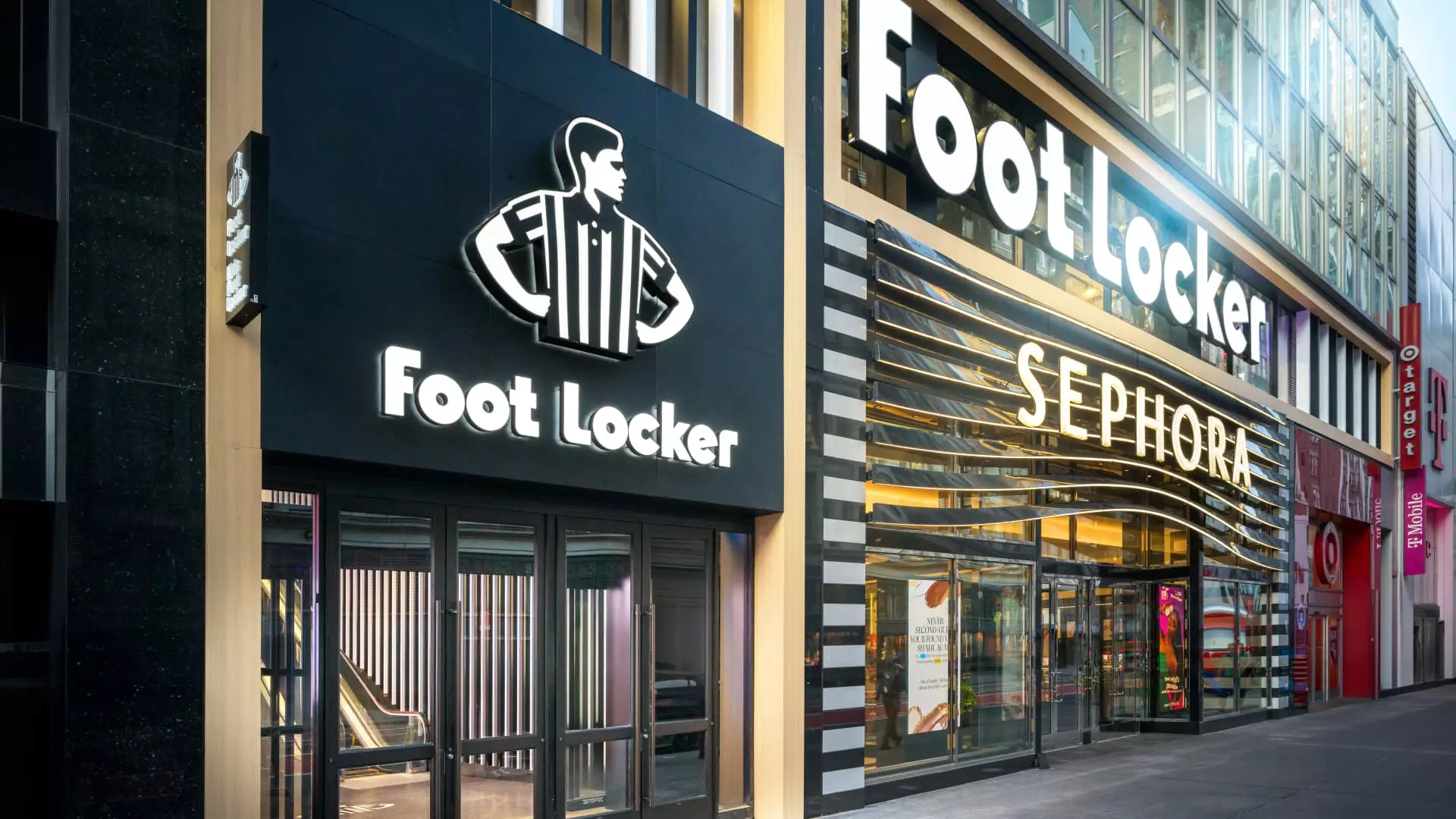Foot Locker’s recent quarterly earnings report has set off alarm bells within the retail industry, particularly for its key partner Nike. The company announced a significant downward revision of its full-year guidance, a move that has raised concerns about the health of consumer demand and the performance of athletic brands. This revision was triggered by weaker-than-anticipated financial results for the third fiscal quarter, leading to a stark 15% decline in Foot Locker’s stock during premarket trading.
In a marketplace marked by increased promotional activities and shifts in consumer behavior, Foot Locker’s figures tell a sobering story. While analysts expected a revenue of $2.01 billion, the sneaker retailer only managed to pull in $1.96 billion. This shortfall also extended to earnings per share, which came in at 33 cents, significantly lower than the anticipated 41 cents.
Mary Dillon, Foot Locker’s CEO, illuminated the dynamics of consumer shopping habits, noting that spending patterns have become increasingly polarizing. Shoppers are drawn in during key retail moments—such as back-to-school season and the consumer frenzy surrounding Black Friday and Cyber Monday—but exhibit a noticeable pullback during quieter periods. This inconsistency is forcing Foot Locker to adapt to a retail environment that appears to be governed by sharp peaks and valleys rather than stable demand.
This inconsistency isn’t just impacting Foot Locker—the ripple effects appear to be affecting Nike as well. Dillon acknowledged that the prominent athletic brand is experiencing a decline in foot traffic, partly due to its over-reliance on a limited number of styles to drive sales. Nike’s leadership transition, with Elliott Hill stepping in recently, adds another layer of uncertainty for both companies, with stakeholders wondering how Hill plans to navigate and revitalize the aging brand strategy.
With Foot Locker’s dependence on Nike—accounting for about 60% of its sales—any weakness in the footwear giant’s performance is bound to have repercussions. Expectations for Nike’s upcoming quarterly report on December 19 are already tempered, with analysts foreseeing more challenges ahead based on Foot Locker’s disappointing figures.
The outlook for the holiday season appears dire as well, with Foot Locker adjusting its forecast for sales during this critical period to a decline between 1.5% and 3.5%, in stark contrast to last year’s slight gain. Even more worrying is the fact that comparable sales are projected to grow only between 1.5% and 3.5%, which is below the previously anticipated 3.4%.
Foot Locker’s management attributes this gloomy outlook partially to elevated promotional levels that have permeated the category more than anticipated. With numerous competitors heavily discounting their products, the pressure to offer competitive prices hampers profit margins and complicates strategic planning.
However, all is not bleak in Foot Locker’s quarter. Interestingly, despite the overall downturn in performance, the retailer managed a 2.4% increase in comparable sales year-over-year for two consecutive quarters, pointing toward signs of resilience amid turmoil. The firm also reported significant growth in its Champs and WSS brands, which both recorded positive comparable sales—2.8% and 1.8%, respectively.
Additionally, Foot Locker experienced a notable improvement in gross margin, with a 2.3 percentage point increase attributed to reduced promotional activity compared to the previous year. This newfound strength suggests that while the broader retail environment may present challenges, some areas of Foot Locker’s operation might be gaining traction, highlighting the potential effectiveness of Dillon’s turnaround strategies.
As Foot Locker continues to face numerous hurdles in a changing retail landscape, its leadership plans to focus on brand partnerships and store refurbishments. Dillon expressed optimism about the company’s ability to weather these challenges, citing a strong relationship with Nike’s new leadership and a commitment to utilizing existing resources wisely.
Despite the initial concerns stemming from financial adjustments and shifting consumer dynamics, the key will be whether Foot Locker can sustain growth while adapting to a more unpredictable marketplace. The company aims to leverage its competitive edge through strategic improvements, all while remaining vigilant regarding the broader economic factors impacting consumer spending.

